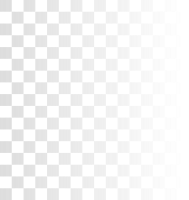



(818) 932-9644
Creative Behavioral Consultants, Inc.
4500 Park Granada Blvd., Suite 202
Calabasas, CA 91302

How ABA Works On The Brain
The brain of a child with Autism Spectrum Disorder (ASD) is different
than the brain of a child without ASD. Whereas learning comes
naturally to most, a child with ASD requires repetitive instruction in how
to learn. Children have different types of learning styles, but years of
research has shown that learning is easier, more effective, and longer-
lasting if behavioral strategies are used to assist the learning process in
a systematic way.
Dr. John Youngbauer, Ph.D., MFT, BCBA, previous Behavioral Services
Supervisor of the North Los Angeles County Regional Center provided
an analogy to explain how intensive behavioral interventions impact a
child's ability to learn, and gave us a glimpse into why Applied Behavior
Analysis is successful in treating this disorder.
“Imagine you’re standing in front of an untouched poppy field and you
decide to walk through it. Initially, it would be difficult to form the trail
and no one would be able to tell in which direction you walked. But, if
you followed your footsteps down the same trail, again and again,
eventually a path would appear. Over time, the deep grooves ingrained
in the soil would enable you to follow the path effortlessly.”
This is similar to how Applied Behavior Analysis works on the brain.
When learning a new skill, the more you practice, the more hard-wired it
becomes in the brain, until it is working so smoothly and automatically
that pre-existing deficits in those areas are minimized or eliminated.
Please see our Services page for additional information.

Giving you the tools you need to help your
child reach their full potential



Creative Behavioral Consultants
4500 Park Granada Blvd., Suite 202
Calabasas, CA. 91302
(818) 932-9644

How ABA Works On The Brain
The brain of a child with Autism Spectrum Disorder (ASD) is different
than the brain of a child without ASD. Whereas learning comes
naturally to most, a child with ASD requires repetitive instruction in how
to learn. Children have different types of learning styles, but years of
research has shown that learning is easier, more effective, and longer-
lasting if behavioral strategies are used to assist the learning process in
a systematic way.
Dr. John Youngbauer, Ph.D., MFT, BCBA, previous Behavioral Services
Supervisor of the North Los Angeles County Regional Center provided
an analogy to explain how intensive behavioral interventions impact a
child's ability to learn, and gave us a glimpse into why Applied Behavior
Analysis is successful in treating this disorder.
“Imagine you’re standing in front of an untouched poppy field and you
decide to walk through it. Initially, it would be difficult to form the trail
and no one would be able to tell in which direction you walked. But, if
you followed your footsteps down the same trail, again and again,
eventually a path would appear. Over time, the deep grooves ingrained
in the soil would enable you to follow the path effortlessly.”
This is similar to how Applied Behavior Analysis works on the brain.
When learning a new skill, the more you practice, the more hard-wired it
becomes in the brain, until it is working so smoothly and automatically
that pre-existing deficits in those areas are minimized or eliminated.

Giving you the tools you need to help your
child reach their full potential
ABA and Autism
Treatment Specialists





























